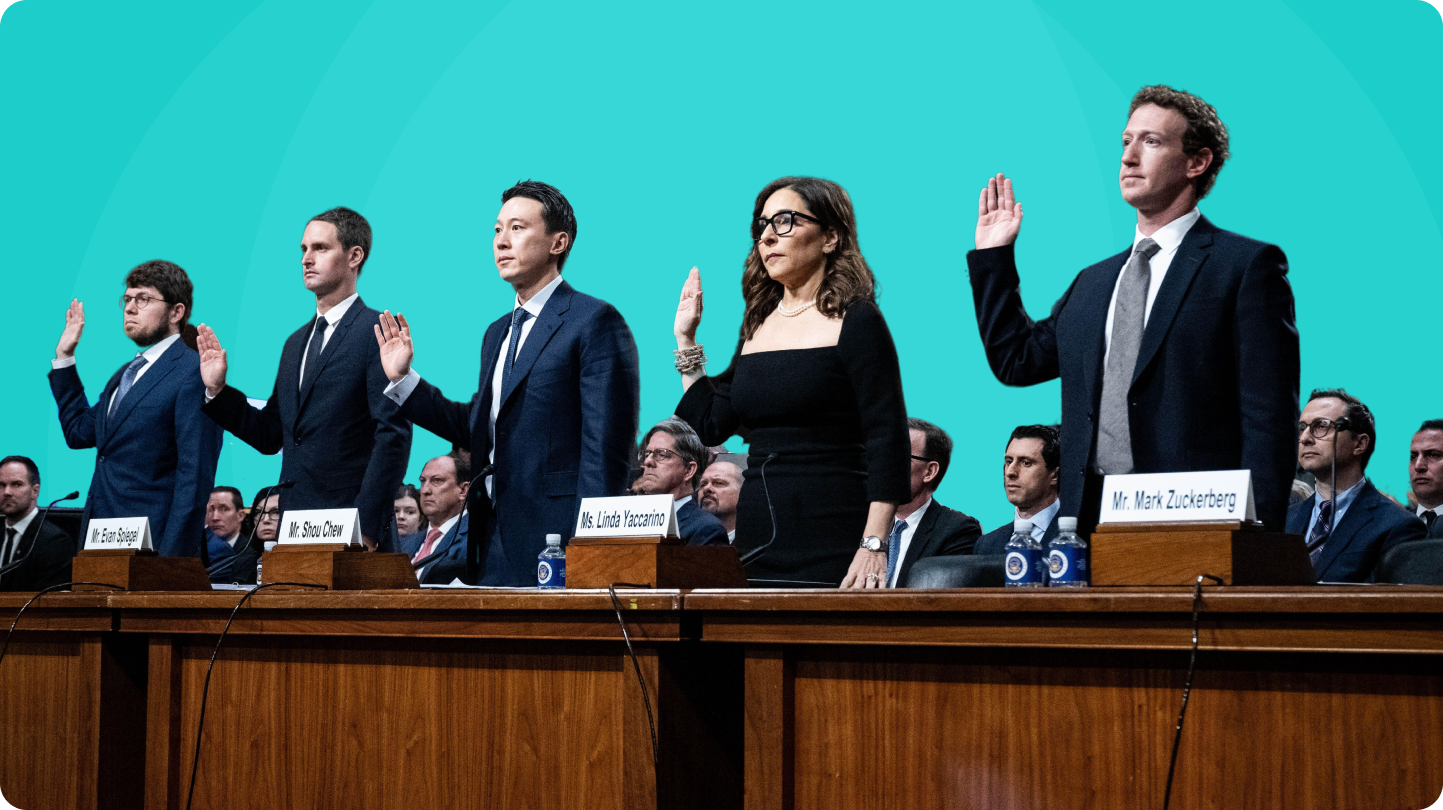Recent social media incidents involving dangerous online ads targeting children as well as numerous cases of cyberbullying, fatal social media trends, addiction, inappropriate content, fake news, and grooming, are all acting as sobering reminders of the challenges we face in keeping the digital realm safe for young minds. Despite promises from tech leaders to prioritize child safety, we've allowed the pursuit of profit to overshadow the protection of innocence far too often. We need to fundamentally reconsider our ways of designing digital spaces, especially those where kids tend to gravitate.
This is the ultimate paradox that we've been chasing here at Angel. Big Tech companies have so far failed to address the issues they vowed to prioritize, which I've also talked about in my last newsletter "Big Tech CEOs Called Before Congress to Account for Child Safety Failures.”
We can't just play whack-a-mole with bad actors and toxic content. We have to fundamentally rethink the incentives and architectures of our digital spaces, especially when it comes to kids. We had the chance to shape the digital landscape into a nurturing place, one that fosters growth, empowerment, and connection for our children. Instead, we allowed it to be hijacked by platforms designed for adult minds and attention spans, then haphazardly unleashed on kids without considering their distinct developmental needs and vulnerabilities. It's time to build something new from the ground up — a technology ecosystem crafted with children at the very center, one that honors their unique ways of learning, exploring and becoming.

Right now, the rapid evolution of digital systems, fueled by their widespread popularity and economic incentives, has led to the limited acknowledgment and examination of negative consequences coming alongside technological innovation. Silicon Valley prioritizes promoting convenience and connectivity when marketing its products. It rarely looks to the empowerment and edification of its audience when that might lead to less engagement. The attention-based monetization models are actually counter to the fundamental trend of making people more productive through technology. Instead, these models exploit human weakness for profit.
As the “race to the bottom of the brain stem”, as Tristan Harris has called out correctly, continues it inevitably keeps leading to devastating and life-threatening effects on personal privacy, and online safety. Even after the justifications and excuses made by CEOs before the U.S. Senate, children are still falling victim to these platforms. Less than two months later, an 11-year-old boy called Tommie-Lee Gracie Billington died during a sleepover, from the ‘chroming’ trend he and his friend saw on Tiktok. The promises and apologies that were and are still made by those companies, were of course, and remain empty, hollow, and null.
Of course, no single company or product can end this social epidemic, or solve this challenge alone, but awareness is growing, and so is the resolve of those fighting this fight. That means taking a hard look at the engagement-at-all-costs business models that currently dominate the industry.
What a digital space for kids could look like
The internet doesn't just need guardrails to create digital spaces that actively promote well-being instead, since that would still be treating it as an afterthought. We need the digital playground for our kids — engaging, healthy, and safe.
All digital spaces need to be reimagined, with a deep consideration of their effects from their very inception. We cannot accept a world in which any child’s mental and overall health is sacrificed on the altar of quarterly earnings. We are aiming for a new model, one that puts their well-being at the center of every design decision, every interaction, and every line of code. Building something that empowers them to be not just passive consumers but active creators, critical thinkers, and empathetic citizens.
That's the vision behind Angel. A safe immersive, on-ramp to the internet that grows with children, adapting to their changing needs and providing age-appropriate support at every stage. An environment carefully crafted to nurture curiosity, creativity, and critical thinking, not just drive clicks and eyeballs. A platform with privacy and security woven into its very fabric, not bolted on as a PR stunt to evade the consequences of safety failures.

To challenge the status quo, we will have to lead a strong and constant movement. We need to come together, parents, educators, policymakers, and innovators, all of us united in our commitment to putting kids first. It will require hard conversations, bold experimentation, and a willingness to stand up to entrenched interests.
That's what drives us at Angel. Not the pursuit of scale for scale's sake, or engagement metrics separated from true well-being, but the chance to be a force for good in a digital landscape that has all too often optimized for the opposite. So let's build a digital world that our kids can explore with confidence and joy, knowing they have a trusted ally by their side. Let's give them the tools and the freedom to become the best versions of themselves, online and off.
That's the mission. That's the promise. And with your help, it's one I know we can keep.
Tim Estes
CEO & Founder @ Angel AI






